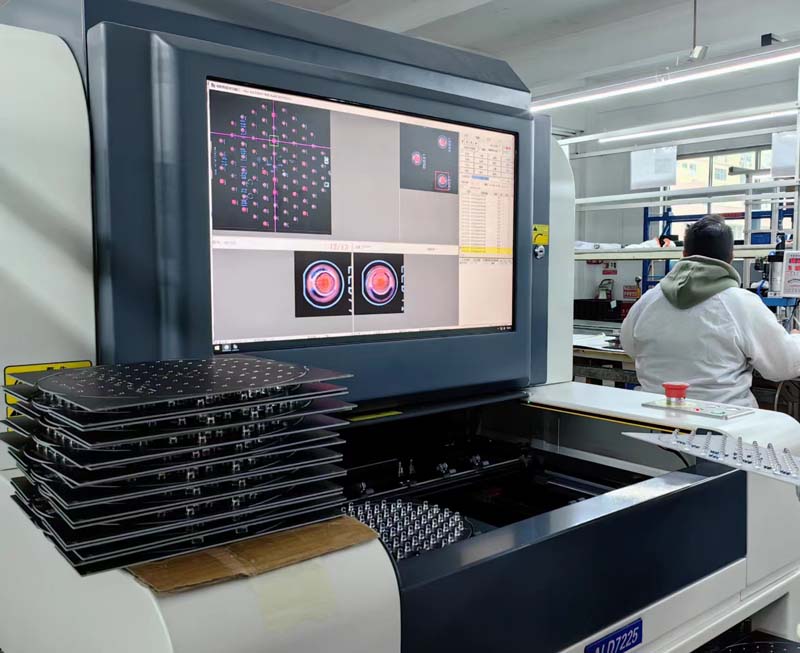- English
- Español
- Português
- русский
- Français
- 日本語
- Deutsch
- tiếng Việt
- Italiano
- Nederlands
- ภาษาไทย
- Polski
- 한국어
- Svenska
- magyar
- Malay
- বাংলা ভাষার
- Dansk
- Suomi
- हिन्दी
- Pilipino
- Türkçe
- Gaeilge
- العربية
- Indonesia
- Norsk
- تمل
- český
- ελληνικά
- український
- Javanese
- فارسی
- தமிழ்
- తెలుగు
- नेपाली
- Burmese
- български
- ລາວ
- Latine
- Қазақша
- Euskal
- Azərbaycan
- Slovenský jazyk
- Македонски
- Lietuvos
- Eesti Keel
- Română
- Slovenski
- मराठी
- Srpski језик
Improving PCBA Quality through AOI Inspection of THT Component Soldering
2024-01-16
As electronic devices become more complex, so do the Printed Circuit Board Assemblies (PCBAs) that power them. Along with advancements in PCBs, the component technologies have also evolved to become disconcertedly compact and intricate. Direct insertion components, in particular, have now become a norm in the electronic manufacturing industry, which demands a higher level of quality control. AOI, an acronym for Automated Optical Inspection, is a non-contact inspection method that can drastically improve the quality of direct insertion component soldering.

ALEADER ALD7225 AOI Inspection Machine For both Reflow Soldering and Wave Soldering
AOI Inspection offers better quality control to the electronic manufacturing industry by providing immediate feedback on PCBA direct insertion component soldering. The technique involves using a digital camera with a high-resolution lens to conduct visual inspections of PCBs.
AOI inspection is a fast, repeatable process, and it eliminates the possibility of human error, unlike manual inspections, which can often result in oversight due to fatigue or distractions. AOI inspection equipment uses algorithmic simulations that account for a wide range of variables, including component placement and orientation, lighting, and color, which leads to fewer false rejects for PCBAs.
The AOI process is also versatile, and it can be used for both pre-production validation and post-production checks. For this reason, it is a non-destructive yet effective testing method for all types of complex component soldering, such as ball-grid arrays (BGAs), fine pitch quad flat packages (QFPs), small outline integrated circuits (SOICs), and dual in-line packages (DIPs).
AOI Inspection can also identify suspect solder joints that exhibit cold solder joints, insufficient soldering, excess soldering, short circuits, lifted or missing components, and tombstoning, which is the surface-mounting defect caused by improper soldering of a component due to wicking or volatilization of the flux. Tombstoning is a common issue in PCBAs that have direct insertion components, and AOI can ensure that tombstoning is almost entirely eliminated.
Conclusion:
AOI inspection is a key factor in the quality of direct insertion component soldering. As PCBAs become more complex, so do the component technologies integrated into them, making inspection and testing more challenging. AOI inspection is a fast, repeatable, versatile, and cost-effective method that offers more advanced, detailed, and reliable inspections than manual inspections. By using AOI inspection, manufacturers can improve the overall quality and functionality of their electronic products.
-
Delivery Service






-
Payment Options









